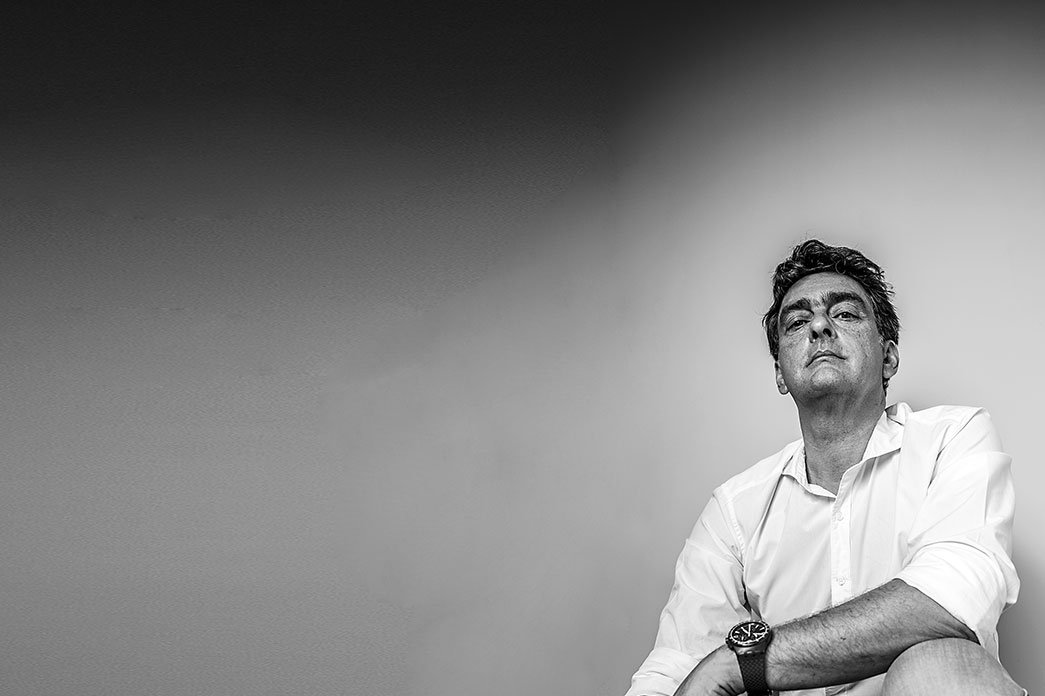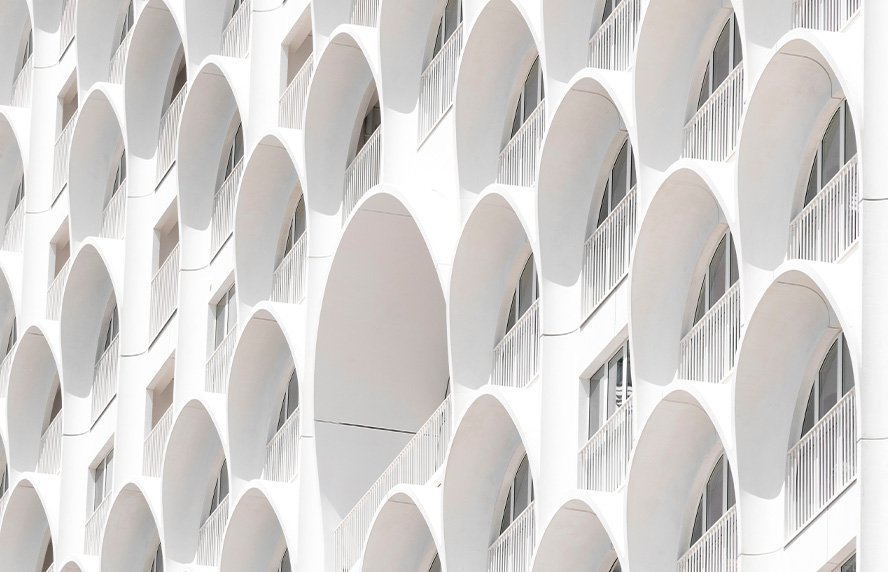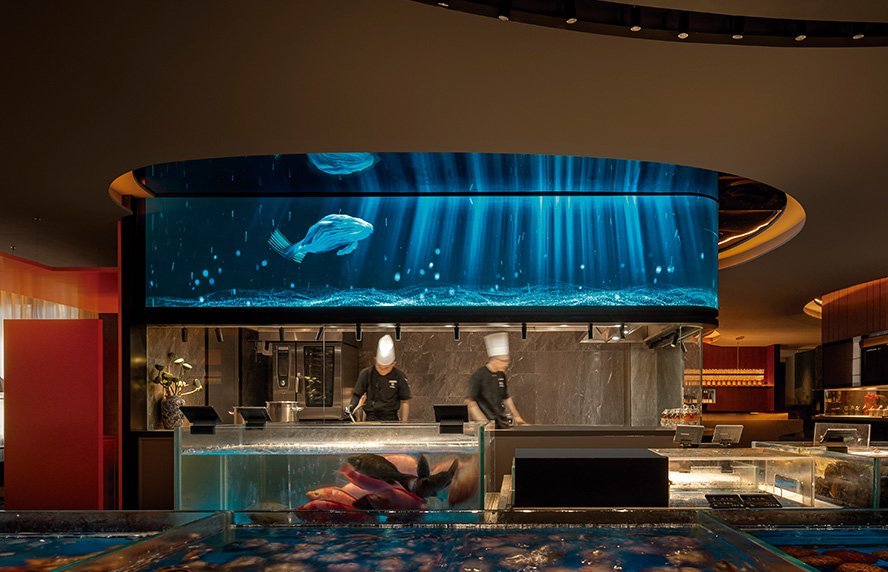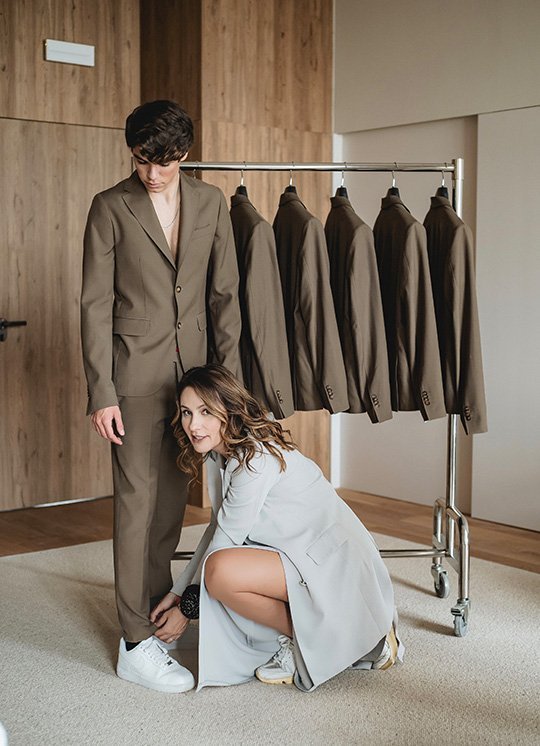
His is a singular name in international architecture and design. From his sketches come works of art that nestle in the environment. He has designed toilets that have proved a benchmark along with the Pilo lamp, an entry in his career book that is now part of the permanent exhibition of the Chicago Athenaeum Museum of Architecture and Design. But it is in the houses that José Carvalho Araújo invests his soul. Born in Braga, the architect has taken the studio bearing his name way beyond Portugal, and in Brazil, he fanning the flames of his distinguished career. Behind the Mário Sequeira Gallery, the Casa do Gerês and the Quinta de Lemos, and many other works, stands a man who lives with passion and an inescapable sense of humour.
Did the expansion into Brazil happen due to an opportunity or by chance?
Brazil seduced me. There was an initial possibility to create a work, through a tender, which we ended up not getting, because we couldn’t give any guarantees in terms of supervising the work. It was an exceptional building, in terms of quality, and we were much appreciated. It was from there that I decided to open a studio in São Paulo to have access to different works and on a scale that, in Portugal, is yet to exist.
And is that how you got to design the Museu de Imagem e Som do Ceará?
Yes. The museum will be opened soon. It already should have been, but this pandemic is delaying everything. Our concern has been interacting with an architectural whole and, at the same time, being provocative. It is meant to be the opposite of what we would conventionally expect, because it is an open space that breathes. It is a small square that ends vertically in a huge screen, where images are going to be projected, and which has small rows of seats, which work as urban furniture for people to enjoy and not feel closed in. I wanted to fight this violence, so that people feel freedom in society.
Also in Fortaleza you designed the Estação das Artes, something on the larger side.
The Estação das Artes (Arts Station) is in the old railway station and is very large; it has ended up being the Museum of Contemporary Art. It features seven warehouses that have a large square in front of them. I proved provocative by saying that this square had to be redeveloped, because there’s no point in creating a museum if the surroundings don’t contribute to a regeneration of the space. The architecture must be seen as a living being; nothing is completely defined. I have to give space for people to appropriate this space, each in their own way, and identify themselves in it. And that gives me tremendous joy and a headache too. I only take pleasure in the opposite, enjoy it if I have the opposite, which is suffering; passion is this madness where we seek compensation.
«I DESIGN FOR PEOPLE, AND THAT’S WHAT DEFINES ME»
Do you fall in love easily with what you do?
It can be very uninteresting what I am asked to do, but from that moment on, for me it becomes a challenge and I start to fall in love. For example, the range of sanitary ware that won, among many others, the Design Plus Award; at that moment, I thought: «how awful, I’m going to design ceramic plumbing fixtures for bathrooms crockery and to top it all off, with ugly names - bidet, toilet and so on...» But I focused. I imagined this space all peeled back, with the pipes showing, and it was in this cylindrical shape, in which you can snuggle, that I got inspired, which resulted in pieces of absolute simplicity. Everything is based on a cylindrical tube that bends and, other times, is in sections.
Design or architecture, where do you feel more comfortable?
I like to design, but my passion lies in people, in places, which are also people. There are awful spaces and cities, but I have good friends there and everything looks beautiful. I design for people, and that’s what defines me. People are much happier when the space around them is balanced. With design it’s the same thing, if a building is designed for urban space, design is designed for architectural space, but there’s always one common element: people.
The famous Pilo lamp looks like a simple design, but it’s so unique.
Pilo was designed many years ago and was at the origin of my lights. It came about from the extendable poles that hold up bathtub curtains, only higher, about 3.20 metres, and can be placed anywhere, because it has two supports: one for the floor and one for the ceiling. Pilo is a well adjusted piece, it is beautiful, in terms of design, has an erotic and sensual side... and people too.
«ARCHITECTURE MUST BE SEEN AS A LIVING BEING, NOTHING IS COMPLETELY DEFINED»
Casa do Gerês is also of extreme sensuality fit into the terrain.
It’s something impossible to explain; it was a project for a friend, which brought me more responsibility. It’s somewhat imposing, which is hidden in amongst the vegetation and awakens a complexity of feelings. The waterline is its raison d’être; it has a very successful design. And the house is basic – in two lines, I did the design –, but all the rest is what creates the result and it was successfully integrated into the plot.
The Mesa de Lemos Restaurant has a curious story that ended up in a place where you can spend the night.
It’s strange that nobody is able to classify that building, because it’s not just a restaurant, nor just a place to sleep. I was asked for a proposal for a restaurant, with the reference of the Guggenheim museum, I didn't say no and I started thinking about the landscape and the surroundings and I started drawing, but nothing came out. Until one day I was doing a contour line on a scale model and that curve came about and I thought of a route: restaurant, bedroom, room for exhibitions and relaxing, and an indoor pool at the end. The client was, and is, an exceptional entrepreneur, with a passion for the location; I take my hat off to him for going along with this proposal that was a tremendous challenge – from a restaurant we made our way towards a multipurpose space.
When you design a house or building do you think of the people who go there?
I try to understand what people want and, at the same time, what they would like to feel in that space; I focus deeply on the emotions that architecture brings about. Architecture has to awaken feelings. I can explain a project, but there are situations that have to be experienced. They say I give soul to what I do; I look for the soul and I don’t even know how to explain it, it goes beyond drawing, but I know it touches people a lot, which it where I focus, beyond the design. When architecture is explained it stops being art, it stops being creative and the creative part cannot be explained, it is felt by each of us.
«ARCHITECTURE MUST AWAKEN FEELINGS»
What was the project that surprised you the most in the end?
All projects end better than what they are in design, contrary to what you think, because a project creates expectations. I can’t help but say that the Mário Sequeira gallery, in Braga, was the project that marked me most, because it was one of the first and, after 25 years, it is still a world benchmark. And it is very good to have people calling me up, telling me that the directors of MoMA, in New York, are going there to see it and that they ended up saying that in terms of private galleries, it is one of the best to be seen in the world.
Your works will stand the test of time.
I look for this timelessness, I like to think architecture from the end to the beginning, I like to imagine my works in a state of ruin, all of them abandoned with plants growing all over them and with any glass long gone. I think all the works we talked about have a timeless architecture, they will make their mark through respect, people will look, even if everything deteriorates, they will respect the work as a piece of art.
Did the expansion into Brazil happen due to an opportunity or by chance?
Brazil seduced me. There was an initial possibility to create a work, through a tender, which we ended up not getting, because we couldn’t give any guarantees in terms of supervising the work. It was an exceptional building, in terms of quality, and we were much appreciated. It was from there that I decided to open a studio in São Paulo to have access to different works and on a scale that, in Portugal, is yet to exist.
And is that how you got to design the Museu de Imagem e Som do Ceará?
Yes. The museum will be opened soon. It already should have been, but this pandemic is delaying everything. Our concern has been interacting with an architectural whole and, at the same time, being provocative. It is meant to be the opposite of what we would conventionally expect, because it is an open space that breathes. It is a small square that ends vertically in a huge screen, where images are going to be projected, and which has small rows of seats, which work as urban furniture for people to enjoy and not feel closed in. I wanted to fight this violence, so that people feel freedom in society.
Also in Fortaleza you designed the Estação das Artes, something on the larger side.
The Estação das Artes (Arts Station) is in the old railway station and is very large; it has ended up being the Museum of Contemporary Art. It features seven warehouses that have a large square in front of them. I proved provocative by saying that this square had to be redeveloped, because there’s no point in creating a museum if the surroundings don’t contribute to a regeneration of the space. The architecture must be seen as a living being; nothing is completely defined. I have to give space for people to appropriate this space, each in their own way, and identify themselves in it. And that gives me tremendous joy and a headache too. I only take pleasure in the opposite, enjoy it if I have the opposite, which is suffering; passion is this madness where we seek compensation.
«I DESIGN FOR PEOPLE, AND THAT’S WHAT DEFINES ME»
Do you fall in love easily with what you do?
It can be very uninteresting what I am asked to do, but from that moment on, for me it becomes a challenge and I start to fall in love. For example, the range of sanitary ware that won, among many others, the Design Plus Award; at that moment, I thought: «how awful, I’m going to design ceramic plumbing fixtures for bathrooms crockery and to top it all off, with ugly names - bidet, toilet and so on...» But I focused. I imagined this space all peeled back, with the pipes showing, and it was in this cylindrical shape, in which you can snuggle, that I got inspired, which resulted in pieces of absolute simplicity. Everything is based on a cylindrical tube that bends and, other times, is in sections.
Design or architecture, where do you feel more comfortable?
I like to design, but my passion lies in people, in places, which are also people. There are awful spaces and cities, but I have good friends there and everything looks beautiful. I design for people, and that’s what defines me. People are much happier when the space around them is balanced. With design it’s the same thing, if a building is designed for urban space, design is designed for architectural space, but there’s always one common element: people.
The famous Pilo lamp looks like a simple design, but it’s so unique.
Pilo was designed many years ago and was at the origin of my lights. It came about from the extendable poles that hold up bathtub curtains, only higher, about 3.20 metres, and can be placed anywhere, because it has two supports: one for the floor and one for the ceiling. Pilo is a well adjusted piece, it is beautiful, in terms of design, has an erotic and sensual side... and people too.
«ARCHITECTURE MUST BE SEEN AS A LIVING BEING, NOTHING IS COMPLETELY DEFINED»
Casa do Gerês is also of extreme sensuality fit into the terrain.
It’s something impossible to explain; it was a project for a friend, which brought me more responsibility. It’s somewhat imposing, which is hidden in amongst the vegetation and awakens a complexity of feelings. The waterline is its raison d’être; it has a very successful design. And the house is basic – in two lines, I did the design –, but all the rest is what creates the result and it was successfully integrated into the plot.
The Mesa de Lemos Restaurant has a curious story that ended up in a place where you can spend the night.
It’s strange that nobody is able to classify that building, because it’s not just a restaurant, nor just a place to sleep. I was asked for a proposal for a restaurant, with the reference of the Guggenheim museum, I didn't say no and I started thinking about the landscape and the surroundings and I started drawing, but nothing came out. Until one day I was doing a contour line on a scale model and that curve came about and I thought of a route: restaurant, bedroom, room for exhibitions and relaxing, and an indoor pool at the end. The client was, and is, an exceptional entrepreneur, with a passion for the location; I take my hat off to him for going along with this proposal that was a tremendous challenge – from a restaurant we made our way towards a multipurpose space.
When you design a house or building do you think of the people who go there?
I try to understand what people want and, at the same time, what they would like to feel in that space; I focus deeply on the emotions that architecture brings about. Architecture has to awaken feelings. I can explain a project, but there are situations that have to be experienced. They say I give soul to what I do; I look for the soul and I don’t even know how to explain it, it goes beyond drawing, but I know it touches people a lot, which it where I focus, beyond the design. When architecture is explained it stops being art, it stops being creative and the creative part cannot be explained, it is felt by each of us.
«ARCHITECTURE MUST AWAKEN FEELINGS»
What was the project that surprised you the most in the end?
All projects end better than what they are in design, contrary to what you think, because a project creates expectations. I can’t help but say that the Mário Sequeira gallery, in Braga, was the project that marked me most, because it was one of the first and, after 25 years, it is still a world benchmark. And it is very good to have people calling me up, telling me that the directors of MoMA, in New York, are going there to see it and that they ended up saying that in terms of private galleries, it is one of the best to be seen in the world.
Your works will stand the test of time.
I look for this timelessness, I like to think architecture from the end to the beginning, I like to imagine my works in a state of ruin, all of them abandoned with plants growing all over them and with any glass long gone. I think all the works we talked about have a timeless architecture, they will make their mark through respect, people will look, even if everything deteriorates, they will respect the work as a piece of art.










